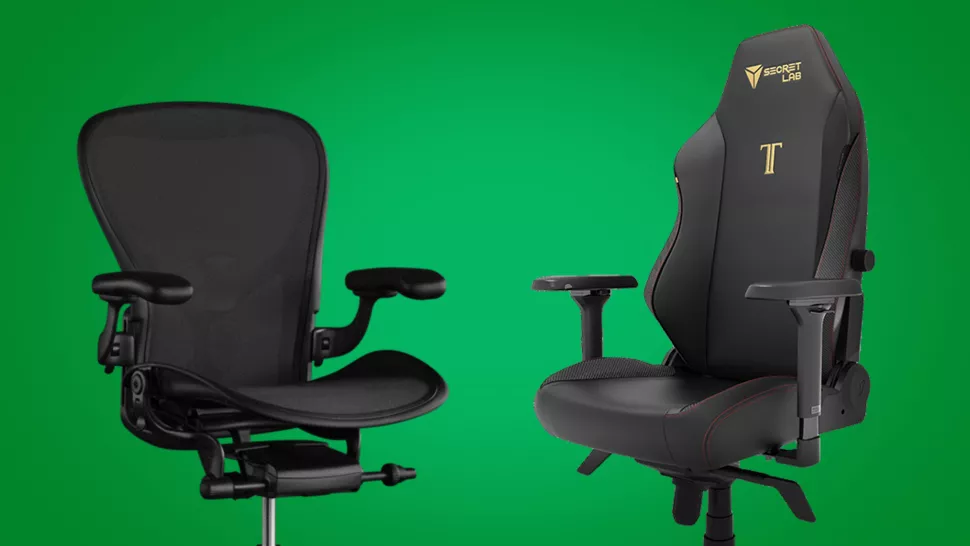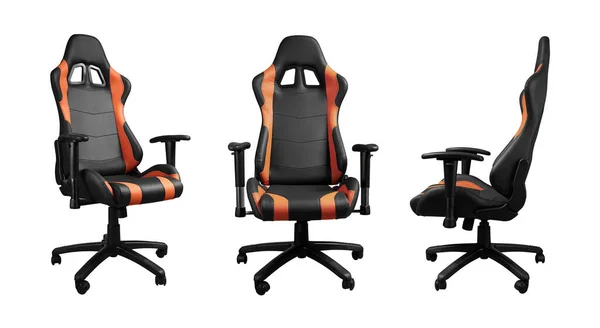As a computer user or an office worker, you may come across ads trying to sell you slick “gaming chairs” for your office use. The design of these chairs is based on seats found in racing cars, and the main selling point they use is that they are ergonomic in design because racers need the best designed seats to be able to drive without having to worry about their neck or lower back, which inspired the manufacturers of the gaming chairs to bring you the same design so you can enjoy safe sitting on your computer. The truth is, gaming chairs are far from being ergonomic, and unless you want to enjoy the real-life feel of playing Need For Speed™ on your computer, you don’t need a gaming chair. To be more affirming, you shouldn’t buy a gaming chair, and here are the reasons as to why:
Lack of breathability

Real ergonomic seats are usually made of mesh or fabric that allows for perspiration when sitting on them for prolonged period. This means that they won’t trap the heat coming out of your body. On the other hand, gaming chairs are usually made of leather and foam that look comfy to sit on at first, but will make you drown in a pool of sweat after sitting on them for few hours.
Bucket seat design (Raised seat edges)

Racing seats are designed with elevated edges that would support your pelvis from moving when steering hard. Gaming chairs adopted the same design, only difference is that you aren’t going to steer anywhere when sitting in front of your PC. Desk chair seats must allow for more movement and variable pelvic sizes when sitting on them, and the elevated edges are uncomfortable for bigger people, and completely useless for all computer users.
Uncomfortable head rest

Gaming chairs usually come with a small pillow that is supposed to function as a head rest. The first issue with the pillow is that with most gaming chairs (especially the more affordable ones), it becomes harder to attach to the chair after few months of use as the elastic bands that strap it become loose. The second and bigger issue is that these pillows are incredibly thick for the average neck curvature, and will force you into sitting with an excessive forward head posture that is not comfortable, and may increase the stress on your head and neck, which serves the opposite of the purpose why a headrest exists. Ergonomic chairs on the other hand come with adjustable headrests, and some of them don’t have headrests in the first place, since the only real use for a headrest is to have a place to rest your head while you are watching something, and not for the majority of computer work.
Lack of lumbar support

The resting shape of the spine varies between individuals, and there is no standard posture or shape for the lumbar spine. This is a natural example of human variability, similar to having different shapes of ears, noses, eyes etc. Ergonomic chairs applies this fact through having adjustable lumbar supports that can be raised or lowered depending on the position of the lumbar curve, and can sometimes be removed completely if you wish to change your sitting posture. Gaming chairs lack any form of lumbar support. While this is not a very important issue, it adds to the fact that gaming chairs are in no way ergonomic.
Elevated seat lip

Most gaming chair seats are designed with a raised lip. This is adopted from actual car seats that are designed this way to raise your foot slightly so you can use the gas and brake pedals easily. However, this increases the pressure on the back of your thigh, and when there are no pedals to use while working on your computer, an elevated seat lip creates unnecessary tension on your leg. Ergonomic chairs are designed with a descending lip that resembles a waterfall that preserves 1-2cm between your calf and seat so that it eliminates any pressure on your leg and allows you more space to move your legs around while sitting.
Winged backrest

Just like the elevated seat edges, racing seats come with winged back rests that protrude anteriorly. This design is intended to avoid swaying and shifting of the body while driving and steering. This function is irrelevant for regular computer use, and is also counterintuitive. Having winged backrests cradles the body and reduces free movement of the torso, and for people with wider torsos, it can cause their shoulders to round due to the reduced space. Moreover, all the cradling can increase your body temperature during warmer weathers which is uncomfortable, useless, and reduces the lifespan of your chair.
Conclusion
We highlighted six main reasons as to why you should avoid purchasing a gaming chair for computer use. Overall, gaming chairs are closer to a sham when it comes to ergonomic design, given that they use ergonomics as a selling point. At best, gaming chairs are better than budget office chairs, but for the people reading this in Dubai, we were able to find more affordable ergonomic chairs that don’t cost a fortune and are sustainable. Stay tuned for an article on ergonomic chair, or contact us if you want to know more about your local options.
This article was inspired by Gamers Nexus video of why you shouldn’t buy a gaming chair, and their cool experiment on gaming vs. ergonomic chairs. Check their review if you want to know more about the industry of gaming chairs and why they aren’t worth the investment.
Discover more from WellFit
Subscribe to get the latest posts sent to your email.



